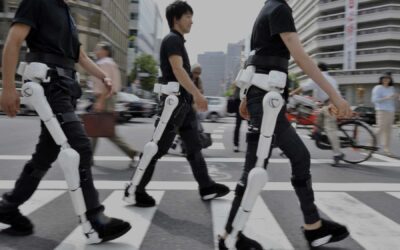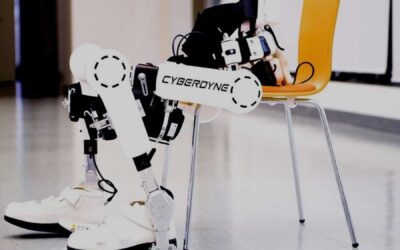“Man, machine, and information are fused” as a result of Wearable Cyborg – HAL®. To cure neurological disorders, it senses the neural data.
Robotics is used in the operation of Cyberdyne, a brand-new technology. This procedure involves helping the patient using a Hybrid Assistive Limb (HAL). The novel idaea of Internet of Things technology serves as the foundation for the created technology.
In addition to producing orders and sending and receiving signals, the Wearable Cyborg HAL® supports the desired movement. Cyberdyne Treatment makes use of Hal® to enhance and rectify the user’s function.
Recovering by HAL from Neurological difficulties
The purpose of the Wearable Cyborg– HAL® is to enhance patients’ physical functions through therapy. The therapy focuses on neurological conditions such as stroke, spinal cord damage, etc.
Treating neurological issues with brain information detected by Hal® makes more sense. With the use of this neuro-rehab gadget, patients suffering from spinal cord injuries, strokes, and various other neuromuscular disorders can enhance their ambulatory function by moving their limbs in response to signals transmitted from the brain to muscles identified via the skin’s surface.
- Neurological disease treatment by neural information sensing
- Taking an active role in robotic rehabilitation led by patients
- enabling individuals to walk without assistance after undergoing HAL treatment
- Health care providers administer HAL treatment.
Neurorehabilitation with the help of HAL
HAL Follows a certain principle…
- Sends Signals
Command signals are sent by the brain. When an individual attempts to move their body, the brain sends the appropriate information to the muscles via the nerves.
Obtains Signals
The commands are sent to the muscles. When the brain sends the proper instruction signal through the nerves to each muscle, the muscle contracts to move the relevant joint. When there is a spinal cord injury, this channel is interfered with, and the signal is not strong enough to provide enough force.
Interprets Signals
Signals are read by HAL®. Very weak bio-electrical signals (BES) are the result of impulses from the brain that are sent to the muscles. HAL determines the type of joint movement the user intends by using senso applied to the skin’s surface to identify these BES.
- Moves
As intended by the wearer, HAL moves. By using the BES to regulate the power units at each joint, HAL® enables the user to carry out voluntary orders that result in the required motions.
- Feedback
The brain receives movement-related information again. The brain receives the sensation back once Cyberdyne Hal® has properly supported the desired movement. The wearer’s ability to walk independently improves when these cerebral pathways are actively used for voluntary movement with physical feedback to the brain.
Rehabilitation
After patients have undergone standard therapy, HAL® training is useful in the neurorehabilitation of those with neurologic motor impairments brought on by trauma and neurodegenerative processes.
Patients suffering from neurodegenerative diseases that cause paralysis or limb weakness benefit from Cyberdyne therapy. This enables the repeated performance of gait patterns that are physiologically accurate, which is necessary for the rehabilitation of neurologic motor deficiency patients.
Log onto https://rehabmodalities.com/ and put your thoughts into action with Cyberdyne HAL®



